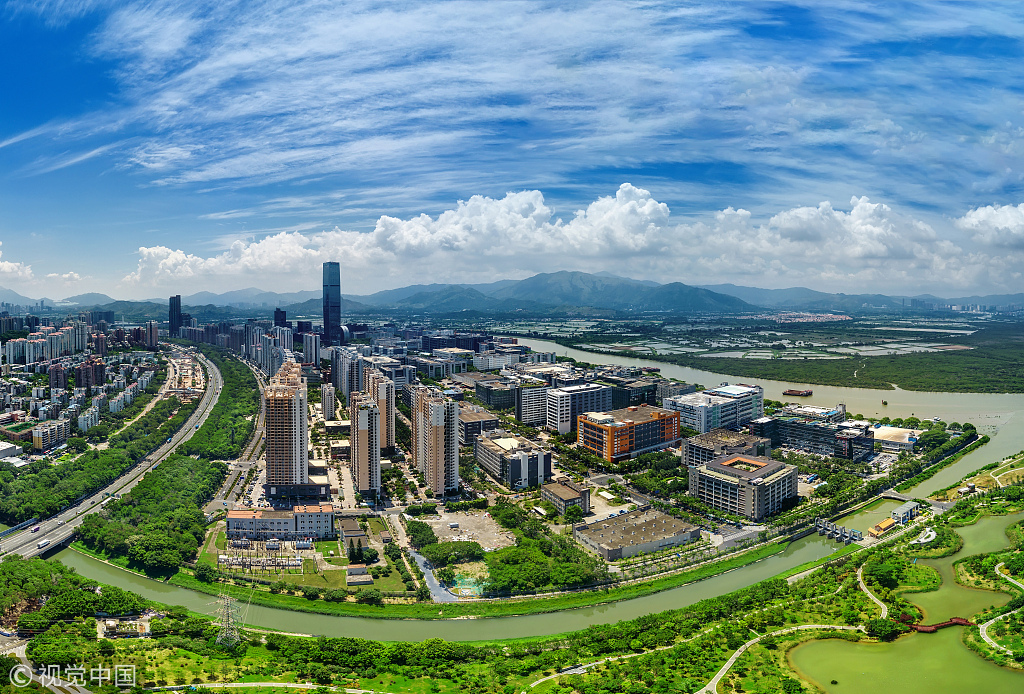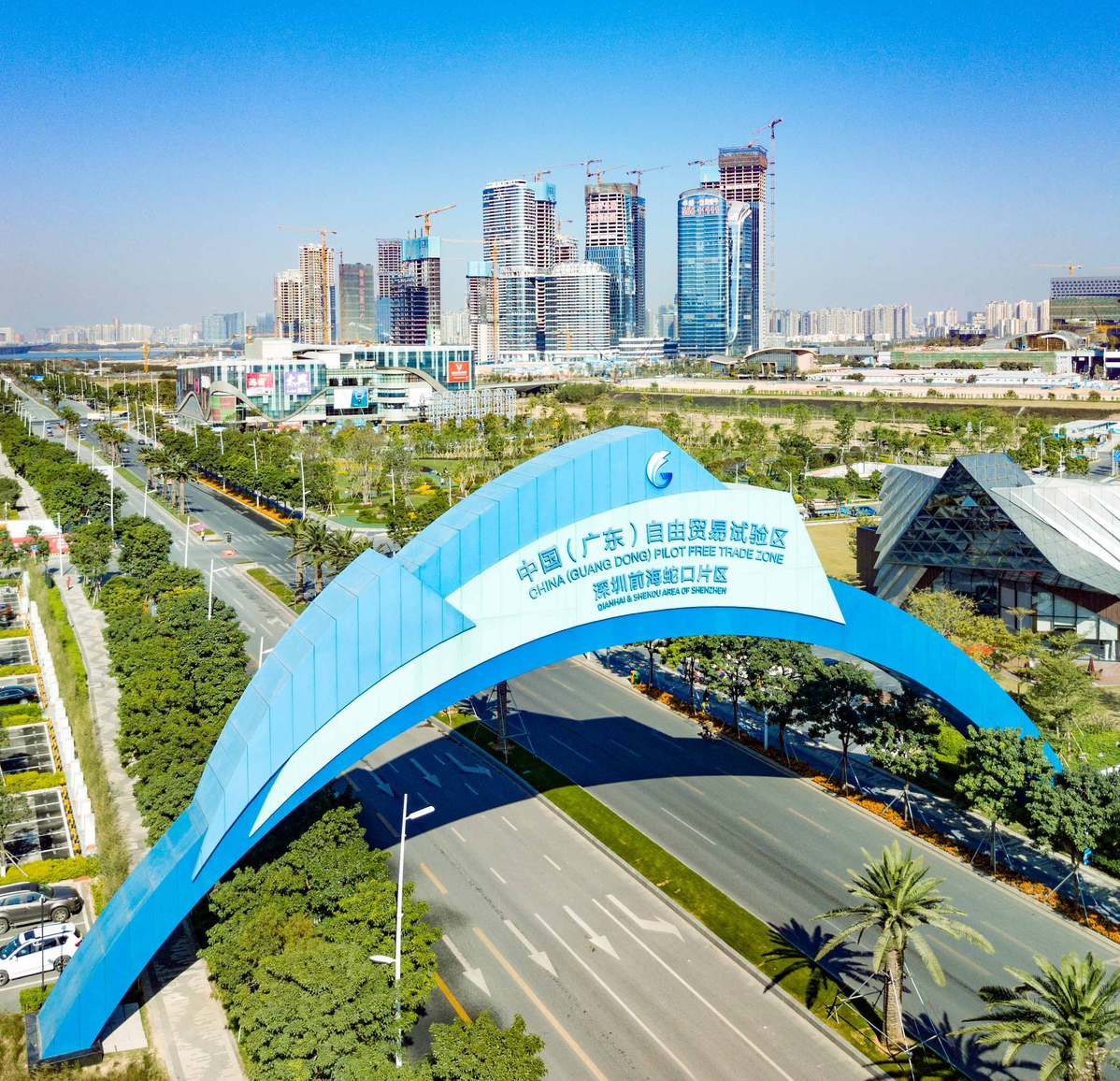Forty years ago, Shenzhen was designated as a Special Economic Zone. It was a beacon of hope to hundreds of thousands of people who had struggled to flee to bordering Hong Kong in pursuit of a better life. It also came as a historic step for China to end its decades-long isolation from the outside world, and as a pilot program to test-drive the starting automobile of China’s reform and opening up.
Forty years later, this beacon light of hope has turned into the focus of global attention.
Shenzhen, once a small fishing town, has grown into an international metropolis with a population of 13.44 million. According to official data, Shenzhen registered a GDP of $381.40 billion in 2019, ranking third among Chinese mainland cities. Shenzhen’s per capita GDP reached $29,000 in 2019. Over the decades Shenzhen has developed four pillar industries, namely, high technology, finance, logistics and culture.

(Photo: VCG)
The city has also used innovation to boost development. The added value of Shenzhen’s high-tech industries, mainly electronics and information, biopharmacy, advanced manufacturing, new energy and new materials, exceeded 923 billion yuan in 2019. The added value of Shenzhen’s financial industry, the logistics industry and the cultural industries reached 366.76 billion yuan, 273.98 billion yuan and 184.905 billion yuan, respectively, in 2019. Shenzhen was the first Chinese city to receive the title of “City of Design” from UNESCO. In 2019, the number of patent applications under the Patent Cooperation Treaty (PCT) reached 17,459, ranking first among major domestic cities for 16 consecutive years.
Shenzhen is home to dozens of multinational companies, including eight on the 2020 Fortune Global 500 list, namely, Ping An, Huawei, Amer, Evergrande, China Merchants Bank, Tencent, Vanke and Shenzhen Investment and Holdings.
With its miraculous achievements, Shenzhen stands out among its domestic peers and was approved as “a pilot demonstration area of socialism with Chinese characteristics” in 2019. Last year, China's central government released a guideline on development of the pilot demonstration area, under which Shenzhen has been entrusted with a clear vision of its future development.
Shenzhen has been chosen as one of the four key players among the nine Pearl River Delta cities plus Hong Kong and Macao in the development of the Greater Bay Area, playing a key role in building an international high-tech innovation center.
Shenzhen will continue making efforts to become a high-quality development community, a law-based model city, an example of being a culturally advanced and civil city, a beacon for people’s well-being and a vanguard of sustainable development.

A view of Qianhai and Shekou Area in the China (Guangdong) Pilot Free Trade Zone. (Photo: China Daily)
The vision of a high-quality development community includes a modern economic system, an innovation-driven growth strategy, a modern industrial system and a comprehensive deepened reform and opening-up system. The prospect of a law-based model city underscores a government ruled by law incorporated with a world-class business environment fostering transparency, justice and fairness. The picture of a culturally advanced and civilized city means inclusiveness, tolerance, diversity, entrepreneurship and a service-oriented public cultural system. The envisage of a beacon for people’s well-being features a cover-all social security system, a sound educational system, a solid medical system and a reasonable housing system. The concept of a vanguard of sustainable development is characterized with comfortable and green living environments, clear skies, clean water and safe and efficient workplaces.
By 2025 Shenzhen will be a top-tier world city in economic strength and development, and a modern international innovative city that boasts first-class R&D input intensity and industrial innovation capabilities, as well as strong soft power and quality public services and an ecological environment.
By 2035, Shenzhen is expected to become a model for high quality development for the rest of China, a world-leading city in comprehensive economic competitiveness, a globally influential creative capital for innovation and entrepreneurship, and a model city for a great modern socialist country.
By the middle of the century, it aims to lead the world and become a benchmark city with outstanding competitiveness, creativity and influence.
The blueprint of Shenzhen was carefully crafted by the Central Government and is scrupulously being implemented by the people of Shenzhen.
(The author is the executive deputy editor-in-chief of Shenzhen Daily. The article reflects the author's opinion, and not necessarily the views of People’s Daily.)


